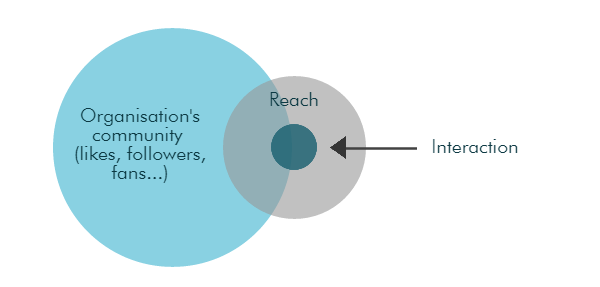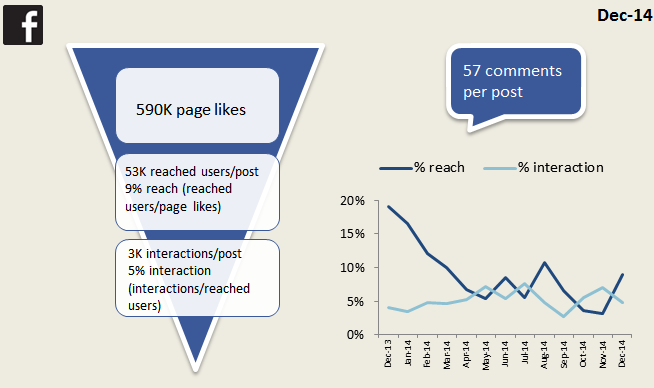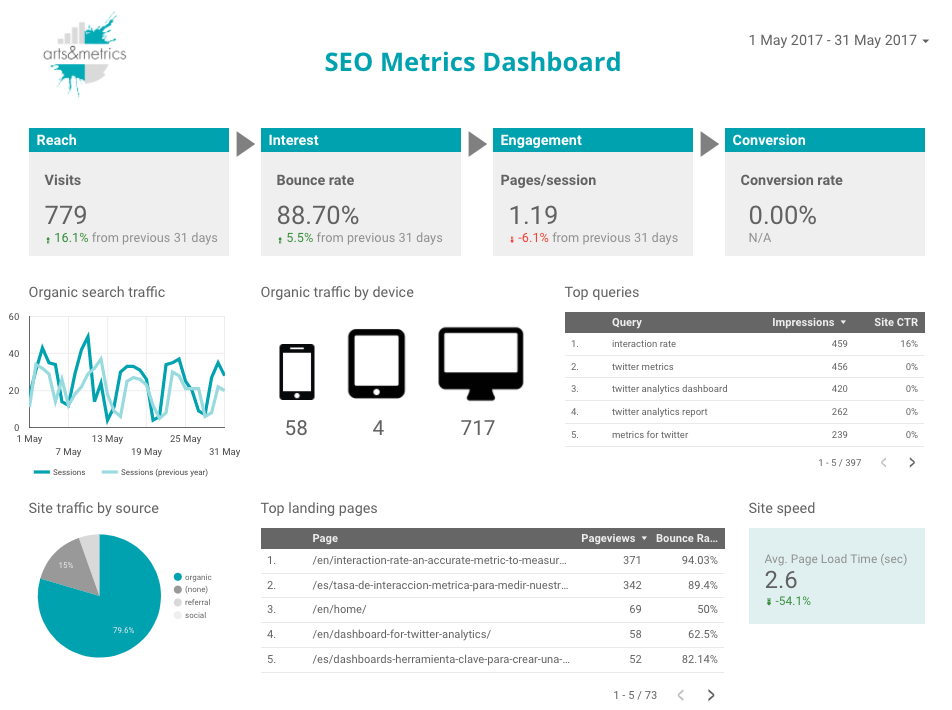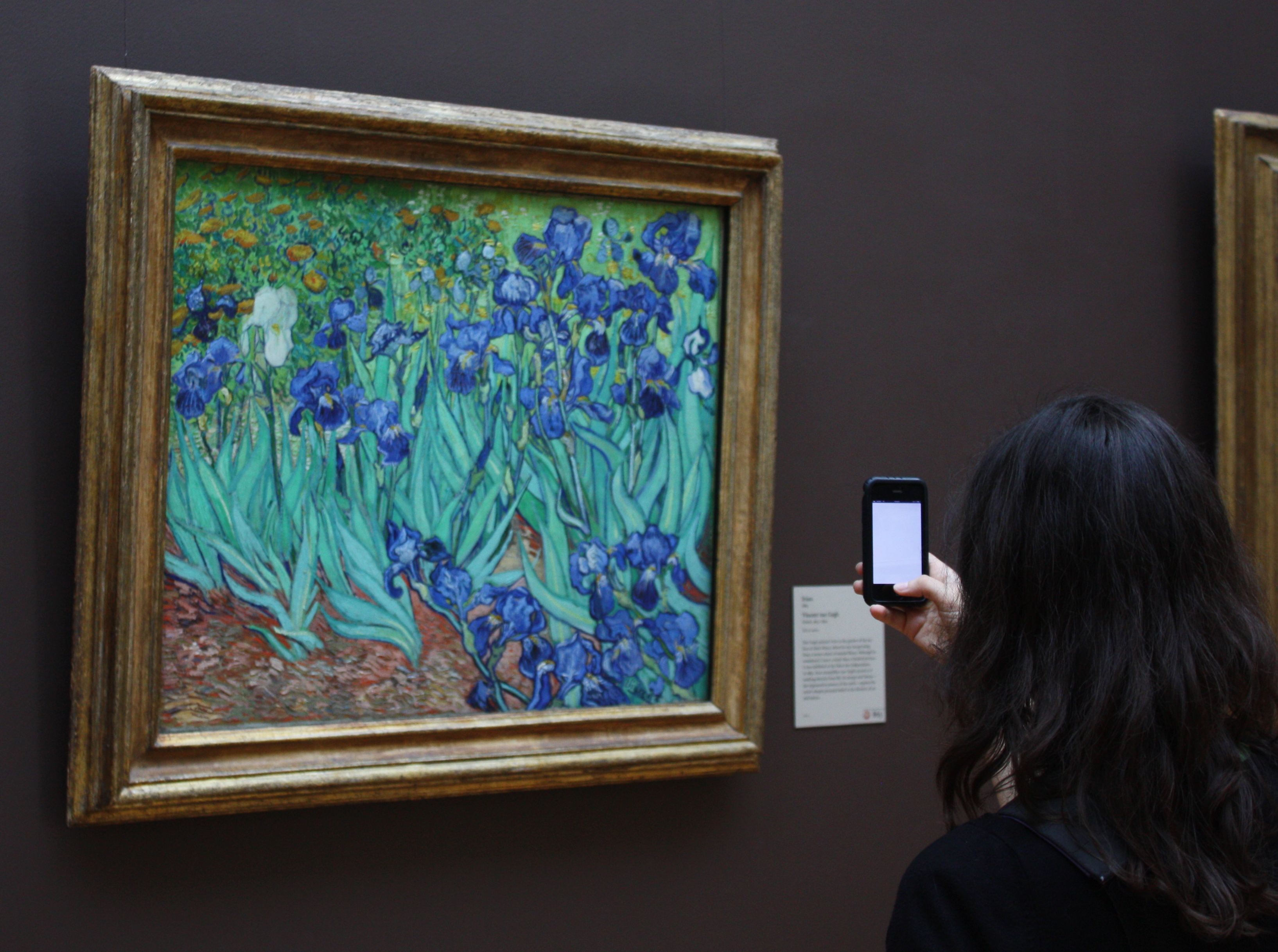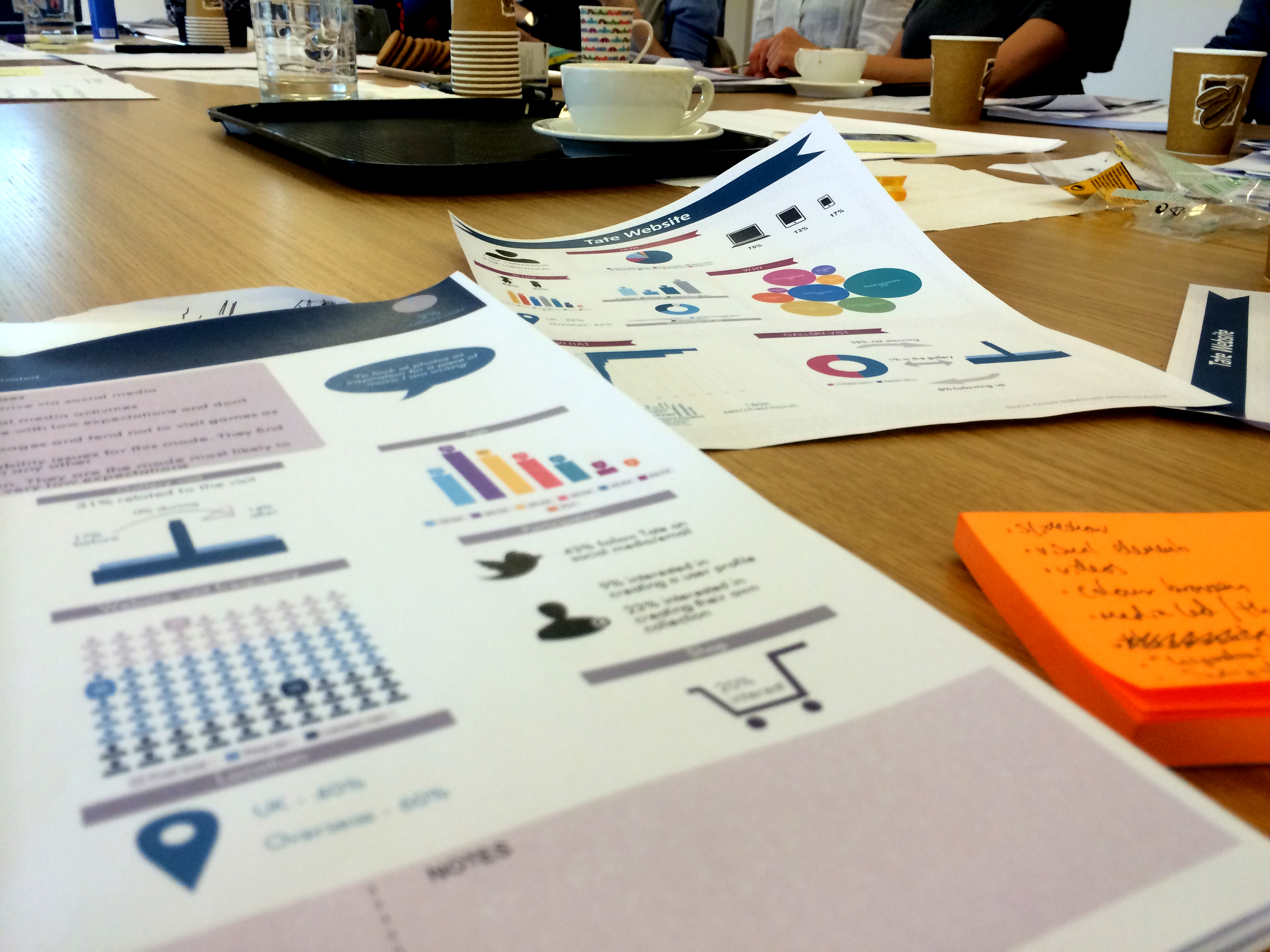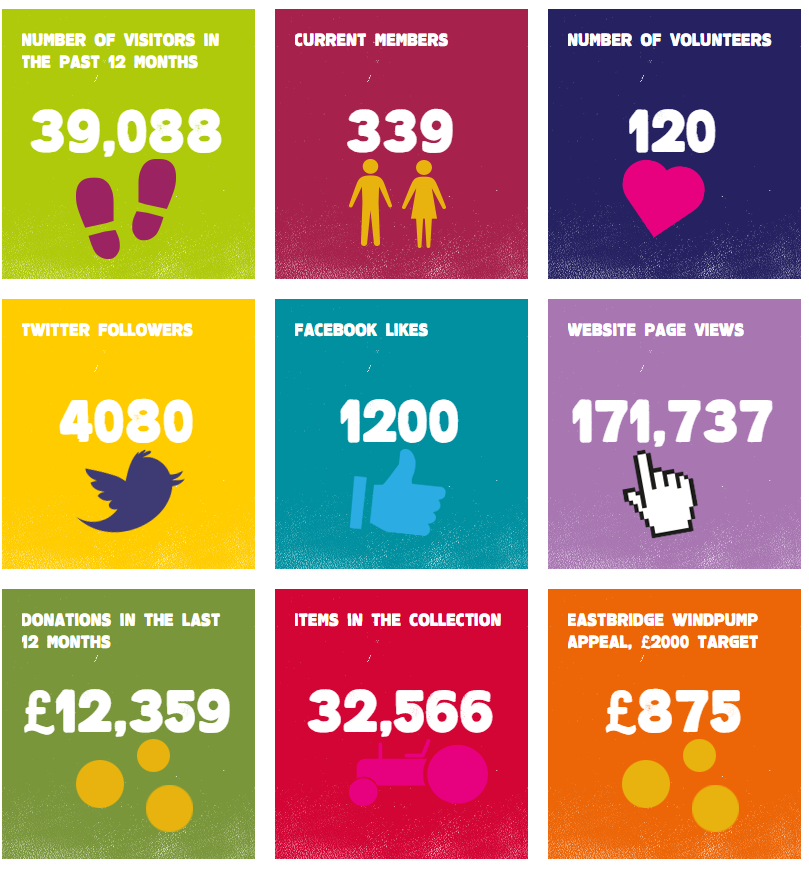There are different ways in which users interact on social media with an arts organisation. They respond to content posted via likes, comments, shares, clicks to enlarge the images, clicks to play videos, favourites etc. The set of social media objectives to attain may vary across organisations and platforms, however, monitoring these interactions and following up how they evolve over time is key to measure the impact of our activities and to understand how trends are changing on these platforms.
Ideally, we would like to calculate the percentage of people who read our message and interacted with it. The diagram below represents the key metrics to measure the actual interaction: community (number of followers), the reach (people who have seen the content) and interactions. The size of the circles will vary depending on the community size, type of reach (organic, viral, paid) and finally, degree of interaction with the content posted.
The interaction or engagement rate, as referred to in some social media analytics tools, can be calculated in different ways. One formula is to divide the number of interactions by the number of reached users.

However, it is not always possible to put the theory into practice. While the ideal scenario would be to apply this formula directly, for certain platforms it will have to be adjusted as the data currently available in the social media analytics tools presents some limitations. For example, in the case of Twitter we would need to use impressions instead of unique reached users.
The data can be represented by using a funnel to show the potential reach and the percentage of conversion. The funnel helps to visualise the different steps of interaction as well as to assess whether the main goal has been accomplished, that is having the users participating and interacting with the arts organisation on the particular social media platform proposed.
Facebook interaction funnel template (Excel)
The interaction rate is a useful metric to track over time to analyse trends, find out your most successful posts or type of content or to draw a comparison with other arts organisations.
